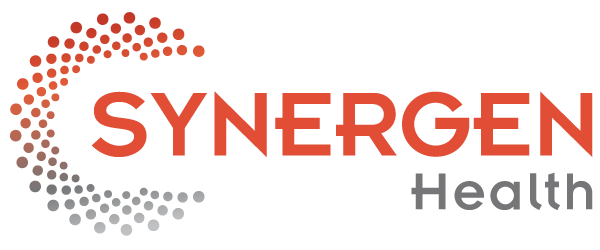 Denials are a hidden killer to obtaining maximum revenue potential, and its impact is not fully understood until healthcare organizations spend the appropriate resources determining the root cause and how to avoid them.
Denials are a hidden killer to obtaining maximum revenue potential, and its impact is not fully understood until healthcare organizations spend the appropriate resources determining the root cause and how to avoid them.
Many healthcare organizations lack visibility into denials due to the inability to track/trend or as a result of the shortage of resources.
According to Change Healthcare’s 2022 Revenue Cycle Denials Index, 12% of all claims are denied upon initial submission. Of those denials, 31% are absolutely avoidable, 51% are situationally avoidable, and unfortunately, 43% cannot be recovered—making prevention vital to avoiding revenue loss.
10 Steps to Reduce Denials and Maximize Cash Flow
1. Robust Data Analytics
When a patient seeks medical care, their diagnosis plays an integral part in healthcare.
Similarly, the first step in understanding and reducing denials is to analyze the data, and one of the most significant problems for most healthcare organizations is the inability to capture denial data, which leaves them fighting blindly.
Organizations must be able to capture and store denial data to analyze and understand the possible root causes that trigger the denials.
2. Proactive Credentialing
A common belief across most healthcare organizations is to get the billing out the door as early as possible to maintain a steady cash flow. However, this misconception usually results in steady but lower-than-expected cash flow.
The first step to reduce denials is to evaluate the root cause. Credentialing status with payers can be a trigger. If an organization receives denials due to not being credentialed, it will be challenging to resolve quickly.
Incorporating a proactive credentialing process will help plan what payers should be credentialed, ensure their claims get out the door promptly, and get paid timely when the claim is received.
3. Coverage Discovery and Upfront Data Collection
Capturing correct information up front is critical. Even in an established organization, a patient’s employment status and insurance plan can change frequently. Similar insurances can have different group or member ID numbers, coverage, deductible, or co-pay fluctuations from year to year.
By initiating denial reporting by both the reason code as well as the CARC/RARC codes, you can isolate patient coverage denials, if or when they will reach their maximum benefits, coverage termination, and if the plan covers the service the patient received.
Software tools can help to automate this process, saving time over having staff manually call on each query to verify the insurance status.
4. Prior Authorization
Prior authorization denials are incredibly time-consuming, partially due to a lack of standardization among payers in reporting and appeals.
It takes time to learn which services they consider medically necessary, which require prior authorization, and which need referrals. Establishing a protocol to consistently document data required for prior authorization in the billing system may help prevent denials.
Likewise, streamlining the process using digitization or electronic authorization to stay within the bounds of medical necessity will help the turnaround time.
5. Timely Submission
Most insurances permit 60 to 90 days to file a claim from the time of service. Claim denials can result in reimbursement delays or revenue loss if an organization files after the stipulated time.
The most common hurdle in timely claims filing is that simple errors can and do occur. To prevent such mistakes, all billing and coding staff must understand different payor requirements.
Identifying and automating repetitive tasks may increase the turnaround time on claims submission. Similarly, figuring out the primary sources of the delays may fine-tune the process, leading to efficiency across the claim cycle.
6. Medical Necessity
Medical necessities are on the rise.
Medical necessity is like a puzzle board. All the pieces must fit to ensure the complete picture is displayed, including ensuring the patient’s diagnosis codes align with the procedure codes based on the local carrier’s determination policies.
It takes coding expertise to ensure what is billed is accurate and meets medical necessity guidelines. Understanding the reimbursement rules and providing feedback are vital to avoiding this type of denial.
7. Payer Guidelines
It’s not always possible to win every battle. Understanding payer coverage guidelines helps you prepare for the battles that are hard to win.
Certain payers may consider procedures as experimental or investigational. It’s challenging to resolve this type of denial without causing a change in payer policy. However, understanding how this impacts your organization and remaining current on payor policies are a critical step.
Developing a comprehensive database of payer guidelines/nuances is also essential to effectively fighting denials and minimizing their impact.
8. Identify Denial Trends
Thousands of denial code combinations can exist across an organization with large volumes of claims. This is further complicated by the number of CPT diagnosis codes reported on a claim. As a result, without automation, the billing team is unable to identify denial patterns using a manual spreadsheet.
This is where Machine Learning (ML) techniques are useful, as they enable you to identify those complex patterns and automatically determine success/fail appeal results.
For example, it could be that a specific combination of a procedure code, diagnosis code, and a rendering provider consistently results in denied claims.
Understanding the root cause of those claims and how to fix them becomes more manageable when you know the attributes common to your denials. With history, ML technology learns over time and becomes more efficient at correcting denials that result in payment. Increasing the turnaround on cash and eliminating the hours spent on manual effort of reviewing the denials and appealing.
9. Improve Denial Management Programs with Workflows
Even the most sophisticated organization management systems available today have a commonly observed weakness; they come with a suboptimal workflow management module for denial management.
A competent workflow management system should enable your staff working on denial management to organize their work in a meaningful manner and be able to customize the workflow rules (grouping by denial codes, payers, etc.).
Your workflow management system should be able to execute the fixes, such as rebilling claims with corrections, with the least number of steps. It should also enable tracking of successful fixes executed to improve cash flow.
Finally, the system should provide the necessary analytics (or be able to integrate with an analytics tool) so that they can evaluate the success rates of fixes periodically.
If they do not yield results, your organization may need to explore other options and prevent the administrative burden of executing appeals that do fail.
10. Automate Appeals
Organizations can leverage Robotic Process Automation (RPA) to implement an efficient appeals program to increase revenue and minimize administrative burdens.
From simple mail merge tools to more sophisticated applications, RPA can increase your appeals efficiency significantly. It’s important to note that you must formulate strong customized appeal letters for the different permutations (by denial reason, payer, etc.) first and then use RPA to gain efficiency.
Your appeals letters must have a strong basis addressing specific points of the payer denial as to why they should pay the claim. Once you establish the appeal letters and outline when to use them, your RPA program will significantly reduce the time your staff would spend on these manual tasks.
Reduce Your Denials and Increase Your Cash Flow With the Right RCM Partner
The battle against denials is not one that healthcare organizations can afford to lose.
By embracing these ten proactive steps, you can equip yourself with the tools and strategies needed to minimize denials, maximize cash flow, and ultimately ensure that your focus remains on providing quality patient care rather than grappling with financial setbacks.
Denials may be a hidden killer, but with the right approach and RCM partner, you can defeat them.

